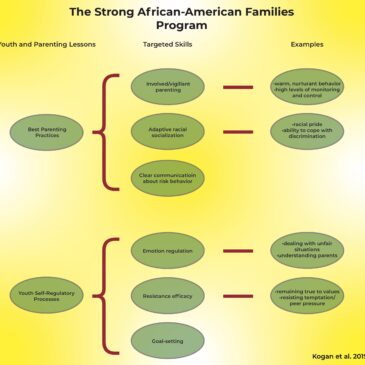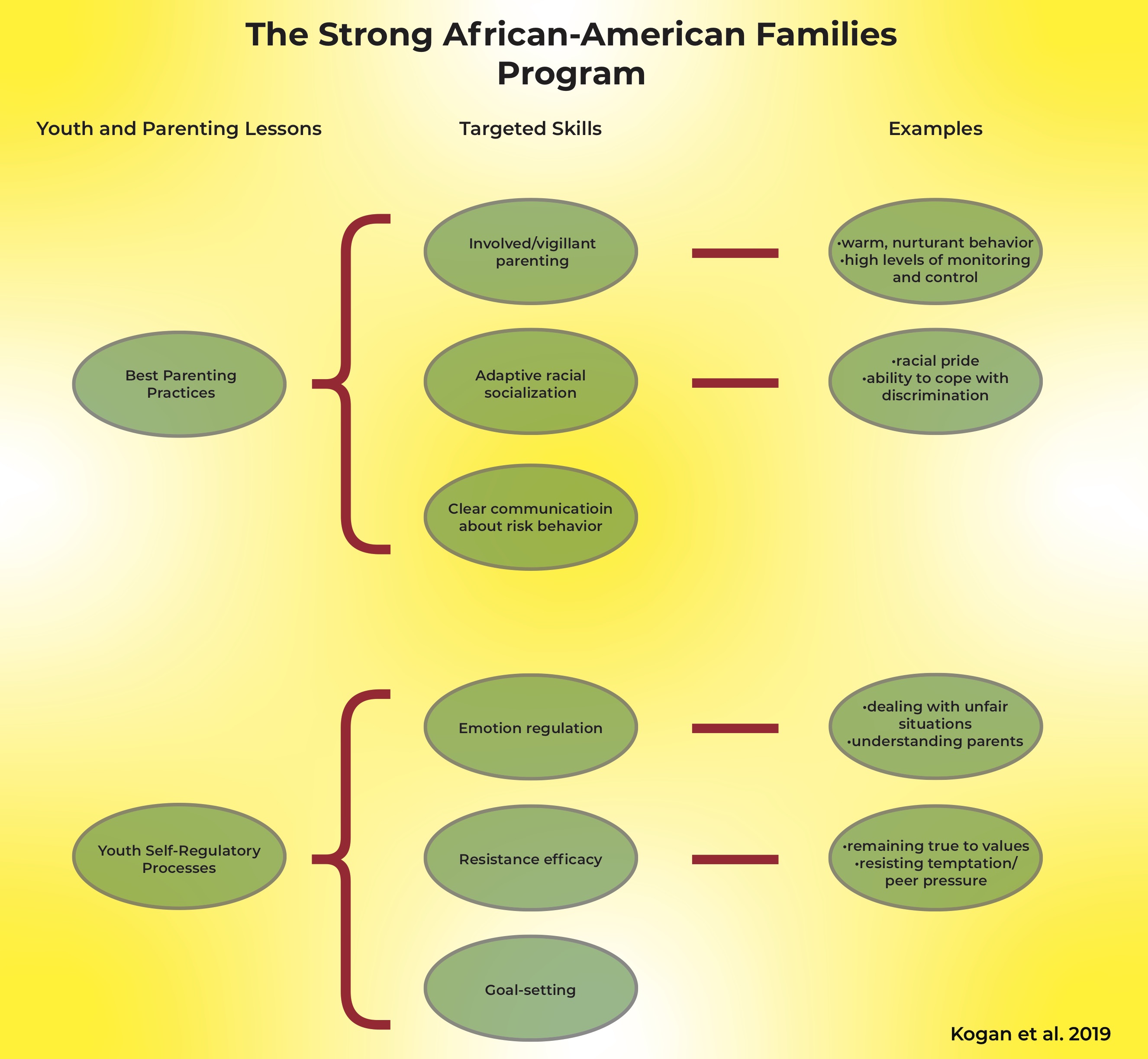Today’s review is part of our month-long Special Series on Community Approaches to Addiction. During this Special Series, The BASIS features innovative, community-based addiction interventions that are delivered outside the doctor’s office.
The Strong African-American Families (SAAF) intervention is a family-centered program for youth 10-12 years old designed to prevent rural African-Americans from drinking alcohol. It combines both parental training (e.g., involved/vigilant parenting including warm, nurturant behavior with high levels of monitoring and control, and adaptive racial socialization including messages to youth to instill racial pride and teach strategies for racial discrimination) and youth self-regulatory processes (e.g., goal-setting training, resisting substance use, and regulating emotions) to develop effective primary prevention strategies. This week as part of our Special Series, The DRAM reviews Steven Kogan and colleagues’ recent investigation into the effects of the SAAF intervention.
What was the research question?
Does SAAF participation reduce the frequency of alcohol use over a 34-month study period? And, how many sessions are needed to achieve this effect?
What did the researchers do?
The researchers recruited 472 African-American families with at least one student in fifth-grade from rural counties in Georgia. Following a baseline assessment, participants were randomly assigned either to an SAAF or to a no-treatment control group. The SAAF program consists of 7 weekly, 2-hour long sessions with the family. The intervention sessions were led by trained African-American facilitators. At each session, the youth reported the frequency with which they drank alcohol in the past three months on a scale from none to 31 or more times. The researchers then used a Compliance Average Causal Effect (CACE) model to assess the causal effects of the SAAF program and the dosage (i.e., number of sessions) needed to achieve the preventative effects. They compared the frequency of drinking at 34-months post-baseline between groups of kids who attended five or more, six or more, or all seven sessions.
What did they find?
Kogan et al. (2019) were able to replicate the findings that the SAAF intervention had a causal effect on reducing the frequency of drinking in youth in a dose-dependent fashion. Essentially, alcohol use increased over time, but youth in the SAAF condition had slower growth in their alcohol use. Also, the effectiveness of the intervention varied according to the number of sessions each family completed: those who attended all 7 SAAF sessions had the slowest growth in their alcohol use.
Figure: The figure reflects the different components taught to the families that undergo the SAAF program. Click image to enlarge.
Why do these findings matter?
Many intervention programs have an initial high impact effect that slowly declines over time for various reasons. It is important to be able to replicate and validate evidence-based intervention strategies such as SAAF to make sure it is an effective preventative strategy. Early onset alcohol use is related to later alcohol and drug use problems, as well as trouble with authority. Additionally, research shows that the consequences of drinking are much greater for African-American youth than European-Americans. Preventing an early escalation of alcohol use can reduce threats to mental health, educational engagement, family relationships, and of greater trouble with the law.
Every study has limitations. What are the limitations in this study?
The self-reported nature of the frequency of drinking among youth could be biased by social desirability, memory recall, or fear of punishment.
For more information:
The National Institute for Alcohol Abuse and Alcoholism has tips and resources for people struggling with problem drinking. For drinking self-help tools, please visit The BASIS Addiction Resources page.
— Karen Amichia
What do you think? Please use the comment link below to provide feedback on this article.





